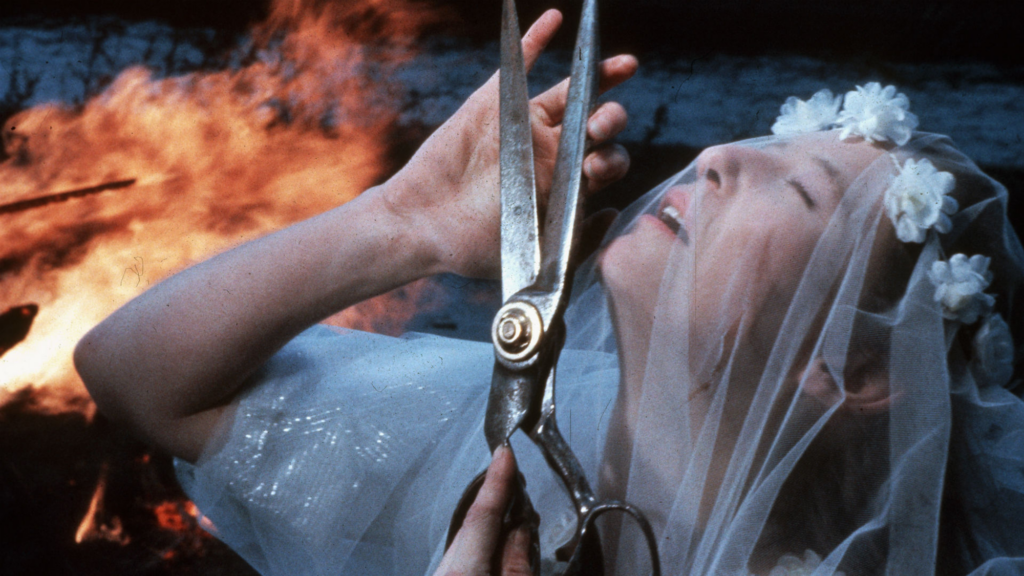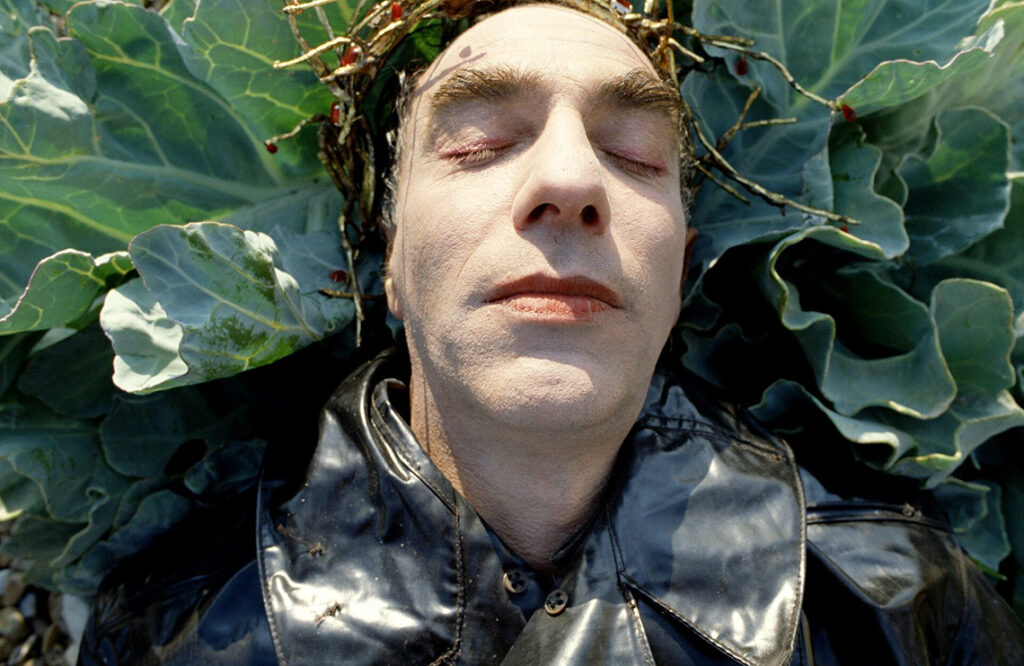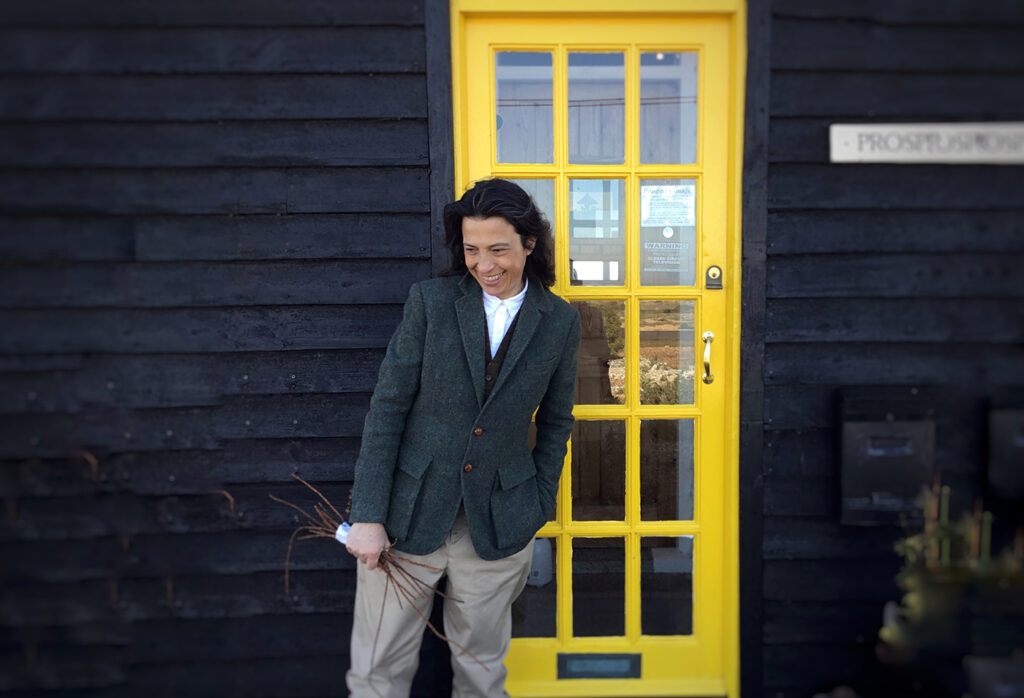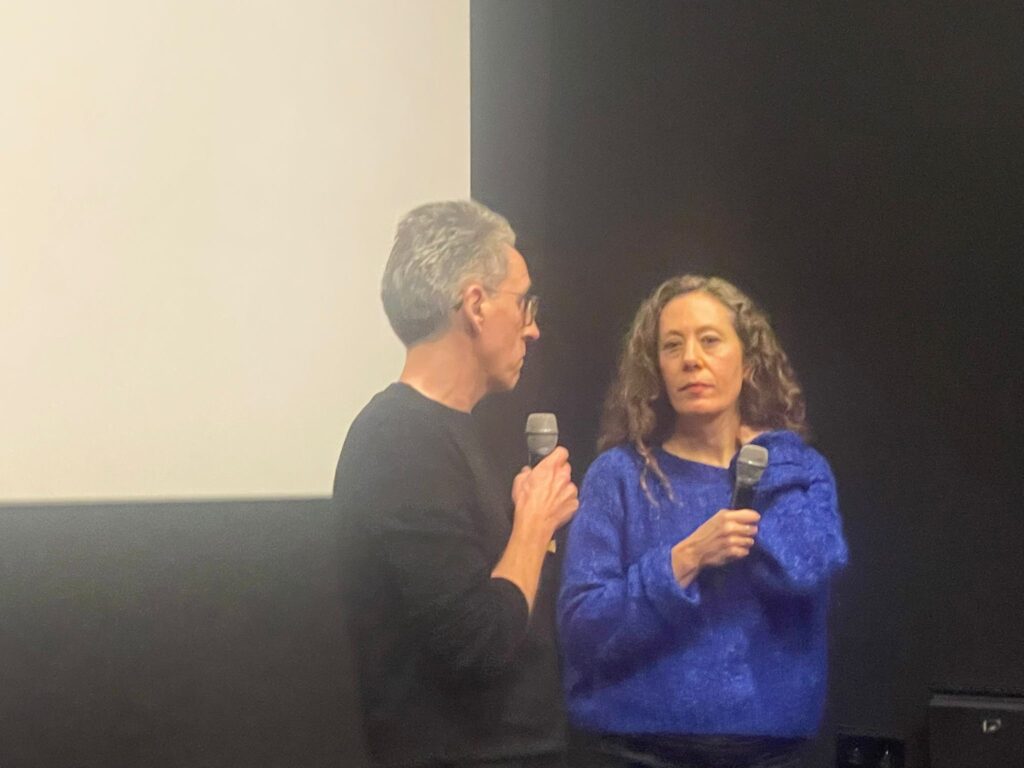Programme composed for 25fps festival, Zagreb 23 – 27/09/2025
It’s not a little ironic that I ended up naming this program after a song by The Smiths. We used to loathe Morrisey. I mean, some of us even wore t-shirts defiantly brandishing the print “Morissey is a Twat”. Though that didn’t stop us from quietly mumbling along with Schneider™ & Kpt. Michigan’s understated elegant version of “There is a Light that Never Goes Out”. Or secretly admiring Johnny Marr’s swirling guitar sound on “How Soon Is Now?” But Moz? No, too lofty for our taste. Too pompous for our post-punk, post-rock, post-everything sensibility. Too much faff and bore and chaff and chore and ego. We preferred our music frail and resilient, gritty and unsettling. We sought out the “noise, warmth and unassuming grace” (the title of an obscure single of one of our darling bands at the time). We aligned with the freaks and geeks, the outsiders and dilettantes, the bedroom tapers and studio alchemists.
It was not a big leap then to discover the world of what is commonly known as “experimental” cinema. When one of my housemates – who later became my colleague at Courtisane – introduced me to the work of Bruce Conner and Frans Zwartjes and Abigail Child and many others, two worlds merged into one.
It’s not that sound and cinema were ever separate entities in my mind. I remember repeatedly listening with my grandmother to one of her favorite records, the soundtrack to Sergio Leone’s Once Upon a Time in The West, starting an Ennio Morricone infatuation which continues to this day. I remember walking to my 24h video store after my night shifts to compulsively look for films by Jean-Luc Godard and Satiyavit Ray, and realizing that they are both tremendous sound artists in their own right. I remember discovering Toru Takemitsu’s soundtrack for Woman in the Dunes, or Alan Splet’s for Eraserhead, or Mario Nascimbene’s for The Night of Counting the Years, or Eduard Artemiev’s for Solaris, and not believing my ears: sound works so ahead of the curve that their force was only recognised decades later, if at all. Pretty soon it became clear to me that some of the greatest sonic explorers of the 20th century did some of their most innovative work for cinema or television: Vladimir Ussachevsky, Bernard Parmegiani, Ornette Coleman, Terry Riley, Klaus Schulze, Haruomi Hosono, Delia Derbyshire… Too many names to list.
The world of “experimental” cinema upped the ante. For some artists (Tony Conrad, Michael Snow, Trinh T. Minh-ha) a clear separation between experimentation in sound and cinema was just non-existent. Others found their match in creative friendships (Toshio Matsumoto & Toshi Ichiyanagi, Stephen Dwoskin & Ron Geesin, Sally Potter & Lindsay Cooper, Peter Forgaćs & Tibor Szemzö, John Akomfrah & Trevor Mathison) or romantic partnerships (Patrick & Michèle Bokanowski, Henning & Ursula Reuter Christiansen, Maya Deren & Teijo Ito, Carolee Schneemann & James Tenney). Some have made groundbreaking work by way of collage (Arthur Lipsett, Betzy Bromberg) or optical sound (Guy Sherwin, Paul Sharits). Others found a singular approach to sound tinkering and layering (Will Hindle, Jane Arden) that far surpassed established codes and practices, even for today’s ears.
I feel there is a multiplicity of histories here that still need to be told. This program only gives a modest taste of some of the adventurous sonic approaches that can be found in the experimental terrain of cinema. Its composition is not unlike that of a mixtape, in that it is based on an intuitive, handpicked selection of films whose soundtracks excite me for one reason or another. I know some of these films only through their sound, so I am thrilled to discover them with you in all their audio-visual glory.
All of these soundtracks have featured in Shadows of the Unseen, a series of mixes I have based on sound and music made for film or stage. This series was started during Covid and now has its own life on the online stegi.radio platform. In the meantime, I have also set up Echoes of Dissent: a project (at KASK School of Arts) that aims to counter the hegemony of the eye and the subsequent disregard for the ear by considering the relationship between cinema and politics from the perspective of sound. After many years of reluctantly having had to approach cinema and sound as two different worlds, it seems I have finally come full circle. Morrisey, on the other hand, doesn’t seem to have circled much at all: more than ever, he’s still a twat.
Gunvor Nelson, My Name Is Oona (1969, 10’. Sound by Steve Reich & Patrick Gleeson)
My Name Is Oona is based on optically printed footage of Gunvor Nelson’s daughter, Oona. Inspiration for the film’s soundtrack came when Nelson attended a Steve Reich performance in which he taped and processed comments and utterances by people who arrived at the gallery. A few years earlier, Reich had already taken part in the making of several films by her husband, Robert Nelson, for which he experimented with the same principles that would become central to his pioneering minimalist phase-pieces: “It’s Gonna Rain” (1965) and “Come Out” (1966). For this film, he worked with recordings of Oona saying her name and repeating the names of the days of the week, looping and phase-shifting the phrases into a mesmerizing multi-rhythmic structure. Throughout the film, the reverberating polyphony intensifies before gently disappearing to give way to the lullaby sung by the loving voice of a mother humming to her child. Gunvor invited Patrick Gleeson – who later made a great score for Bruce Conner’s Crossroads (1976), amongst others – to create the final audio track, which she used to edit the image track. The result is a complex meditation on childhood, memory and identity, in which the interplay of sound and image generates something truly unique.
Werner Nekes, Hynningen (1973, 20’. Sound by Anthony Moore)
You might know Anthony Moore as member of the avant-pop ensemble Slapp Happy, or even from his minimal classics, Pieces from the Cloudland Ballroom (1971) or Secrets of the Blue Bag (1972). These records were produced by the legendary cultural insurgent Uwe Nettelbeck, who was once described as “the Godard of Krautrock”. Moore met Nettelbeck during his stay in Hamburg, where he also developed a long-lasting relationship with the filmmaker-couple Werner Nekes and Dore O. While Moore made soundtracks for other filmmakers, notably for David Larcher’s Mare’s Tail (1969) and Klaus Wyborny’s Chimney Piece (1969-71), his works for Nekes and Dore O stand out the most. On these soundtracks, he further developed the experiments with tape recorders and permutatory compositions that can be heard on his first albums. For Hynningen, which is the fifth instalment of Nekes’s film anthology Diwan, Moore layered shimmering, weeping drones of sine tones and processed acoustic elements, which aligned with his growing interest in Folkways recordings and minimalist music. The beguiling audio assemblage complements Nekes’s extraordinary multiple exposure composition, suggesting the complexity and depth of an enchanting dream state.
Akiko Limura, Mon Petit Album (1973, 10’. Sound by Jacques Bekaert)
One of my all-time favorite Belgian records must be Jacques Bekaert’s self-titled album, originally released in 1981 by the Igloo label. Featuring luminary musicians such as Maggi Payne, “Blue” Gene Tyranny, Georges Lewis, David Rosenboom and David Behrman, the record consists of three delicate configurations of acoustic instrumentations and field recordings, two of which were created for film works by Akiko Limura. I could have easily chosen films by her life partner, Takahiko Limura, a filmmaker who worked with some of the greats of the Japanese sonic avant-garde, such as Yasunao Tone, Takehisa Kosugi or Yoko Ono. But I feel that the work of both Akiko and Bekaert has been historically undervalued and that their collaborative efforts need to be heard – and seen. I haven’t seen it yet myself, so I’m really looking forward to it! A rare review of Mon Petit Album describes it as a “layering of experimental imagery over a natural setting, folding sprawling, overlapped film footage of a pastoral scene under an original soundtrack by Jacques Bekaert combining flute and violin phrasings atop subtly processed sounds. Iimura herself drifts in and out of the frame, making direct eye contact with the camera while embedded in the landscape—a powerful act asserting autonomy over her own image as a woman.”
Rei Hayama, Kodomo Ga Mushi No Shigai Wo Umeni Iku / A Child Goes Burying Dead Insects (2009, 11’)
Another film I haven’t seen before. I discovered its soundtrack when it was released on the wonderful Belgian label Ultra Eczema. According to the label’s promo blurb, “the soundtrack is driven by a beautiful Japanese folk loop, blown over by a HNAS type of sound collage, primitive in its set up, and sliced open by Rei’s own angel type of vocals, like a creepy lullaby.” I couldn’t describe it better myself! The film, structured around a repeated sequence of a young girl burying dead insects in a forest, concerns death, rituals, and lamenting loss. Hayama notes that the burying of dead insects was just one of the ceremonies she developed as a child, which functioned for her to find a sense of order in a chaotic world. In the film, however, we see this ritual repeated over and over. he Single-8 film stock is degraded through exposure and manipulation time and again until the deterioration of the image drains all colour from the screen. As the film progresses, the cycle becomes more abstract and illegible. The cycles of life and death, of nature and rituals are found in the materiality of the film itself, suggestive of a blurred line between animals and humans, man and technology. It was previously shown at 25FPS, but it’s in dire need of a comeback!
Frans Zwartjes, Achter je Muren / Behind Your Walls (1970, 12’)
Praised as “the great magician” or on one occasion even as “the most important experimental filmmaker of his time” (Susan Sontag), Frans Zwartjes produced, directed and edited his own films; but more importantly, he created and improvised the soundtracks too. When my former housemate showed me Zwartjes’ Living (1971) many decades ago, I was immediately entranced by the combination of the visual bravura of a fantastically mobile camera, swooping and swirling with extraordinary elegance, and the sonic delicacy of an electronic organ generating drifting and oscillating chordal tones. The soundtrack, it turned out, was the result of an improvisation by Zwartjes himself along with Michael Waisvisz (a great pioneering inventor of experimental electronic musical instruments). The soundtrack of Behind Your Walls was made in collaboration with his brother Rudolf and features a collage-like assembly of processed sound textures and bruised melodic figures, adding a hypnotic layer to a hallucinatory kammerspiel of feminine estrangement and isolation. In 2013, a few years before he sadly passed away, Stanley Schtinter located Zwartjes and uncovered a rich archive of unheard music. To release a selection of this collection, Schtinter founded purge.xxx, which is surely today’s best soundtrack label. Let’s hope we get to hear more of Zwartjes sonic treasure trove!
Jeff Keen, Marvo Movie (1967, 5’. Sound by Jeff Keen, Annea Lockwood, Bob Cobbing)
“Noise Art” is a posthumous collection of Jeff Keen’s sound work, comprising cassette recordings created during the 1980s for his expanded cinema shows. That phrase fits Keen’s films very well. Their strobe-like barrage of imagery impacts the eye like visual noise, while the soundtracks feel like aural blatz-poems, combustible palimpsests of voice and noise, hiss and fizz. The late Mark Fisher once enthusiastically wrote that one of his films, Rayday Film (1968–70), “is soundtracked by an exhilarating roar of abstract noise that possesses a pleasure-in-pain jouissance worthy of Merzbow. A collage of manipulated voice, chopped and chomped so that it’s devoid of any sense, it resembles a dada chant, or Damo Suzuki being tortured, or a swarming buzz of malign spirits being routed by an exorcist.” Keen’s breakthrough film Marvo Movie is no less of a cineblitz. A rapid-fire montage of sequences of Keen and friends dressed in a variety of costumes and masks are superimposed over cuttings from newspapers and comics and various moving toys. The wildly incantatory soundtrack was recorded in a quick afternoon (just in time for a screening in Liverpool) by Keen, sound artist Annea Lockwood and concrete poet Bob Cobbing. Upon seeing Marvo Movie, filmmaker Ken Russell was famously quoted as saying, “It went right over my head and seemed a little threatening, but I’m all for it.”
Derek Jarman, Pirate Tape (1982, 10’. Sound by Psychic TV)
Derek Jarman is surely the artist-filmmaker who was the closest to the subterranean cultural movement that David Keenan has coined “England’s Hidden Reverse,” involving avant-garde, industrial, and experimental music scenes that emerged from the 1970s onwards. In 1980, Jarman invited Throbbing Gristle to provide a soundtrack for In the Shadow of The Sun. The collaboration started long-lasting relationships with members of TG, Psychic TV and Coil. In 1982, Jarman filmed William S. Burroughs during his first visit to London, where he made a cameo appearance for Jürgen Muschalek’s film Decoder (featuring Genesis P-Orridge) and attended the legendary Final Academy events, curated by Psychic TV. Jarman’s film shows Burroughs on Tottenham Court Road signing autographs with fans and inside a shop buying alcohol. The soundtrack by Psychic TV is a magical-industrial dreamscape of broken transmissions, arcane whispers, and psychic residue, featuring a sample of Burroughs repeating “boys, school showers and swimming pools full of ’em'”. Additional footage shot by Jarman during Burroughs’ visit is reported to have been confiscated by Scotland Yard in 1991 and remains lost. Jarman and Psychic TV would continue to collaborate (“magic bound us together,” Jarman wrote), with Jarman directing the music video for Catalan and starring as the spokesperson in the Psychic TV video A Spokesman for the Temple of Psychick Youth.
Stan Brakhage, I… Dreaming (1988, 7’, Sound by Joel Haertling)
Stan Brakhage was always intensely dissatisfied with the conventional uses of sound and music in cinema. He studied with John Cage and Edgard Varèse, searching for a new relationship between image and sound and with the idea of, thus, “creating a new dimension for the soundtrack.” However, the more informed he became of the aesthetics of sound, the less he began to feel any need for an audio accompaniment to the visuals he was making. Instead, he developed a concept of music as the “sound equivalent of the mind’s moving.” Out of nearly 400 films made between 1952 and 2003, I… Dreaming is one of around only 30 which have a soundtrack. The rest are silent. It is set to a sound piece by Joel Haertling, member of the experimental music collective Architect’s Office (also featuring Rick Corrigan, another Brakhage collaborator). The piece is a melancholic collage based on recurring fragments of songs by Stephen Forster, referring to loss of love in the popular “torch song” mode. The film, described by Brakhage as “my self-in-crisis portrait”, envisions a re-awakening of such senses of love as children know best, as it posits – along a line of words scratched in the film – the maddening experience of waiting and longing.













